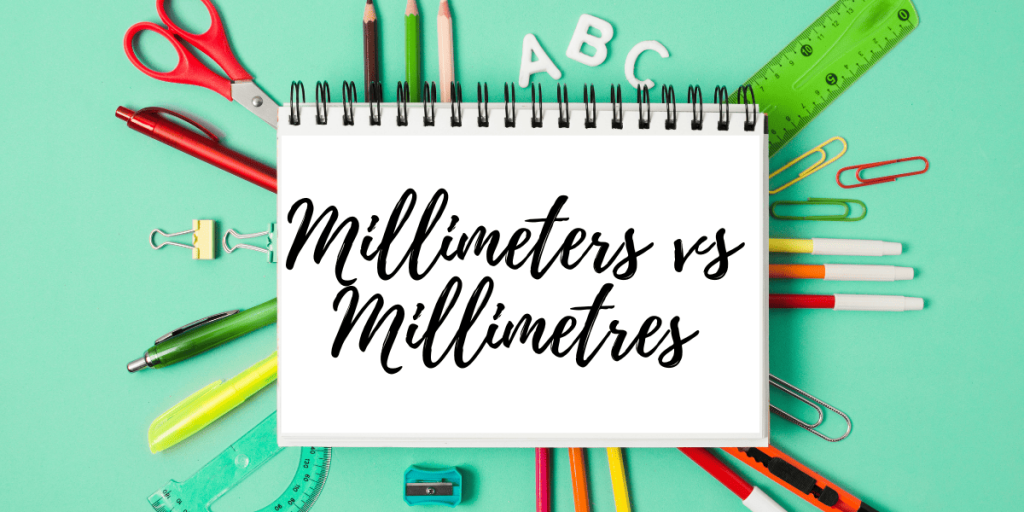Millimeters vs Millimetres: What’s the Difference and How to Use Them Correctly?

“Millimeters” and “millimetres” are classic examples of homophones — words that sound the same but have different spellings and are used in different variants of English.
This can lead to confusion, especially in writing, where regional spelling conventions matter. In this post, we’ll explain the difference between “millimeters” and “millimetres”, provide examples, and help you avoid mistakes with a simple quiz and tips.
What Does “Millimeters” Mean?
Part of Speech: Noun (plural of “millimeter”)
“Millimeters” is the American English spelling for the metric unit of length equal to one-thousandth of a meter.
Examples:
- “The part measures 15 millimeters.”
- “Rainfall is expected to reach 50 millimeters.”
What Does “Millimetres” Mean?
Part of Speech: Noun (plural of “millimetre”)
“Millimetres” is the British English spelling for the same metric unit of length.
Examples:
- “The part measures 15 millimetres.”
- “Rainfall is expected to reach 50 millimetres.”
Key Differences: Millimeters vs Millimetres
| Variant | Spelling | Usage |
|---|---|---|
| American English | Millimeters | Used in the United States |
| British English | Millimetres | Used in the UK, Australia, and other Commonwealth countries |
Common Mistakes
- ✘ “The length is 20 millimetres.” (in American English) → ❌ Incorrect
- ✔ “The length is 20 millimeters.” (in American English) → ✅ Correct
- ✘ “The rainfall was 30 millimeters.” (in British English) → ❌ Incorrect
- ✔ “The rainfall was 30 millimetres.” (in British English) → ✅ Correct
Easy Tricks to Remember
- Millimeters: American English uses “-er” endings.
- Millimetres: British English uses “-re” endings.
Quick Practice Exercise
Choose the correct spelling (millimeters or millimetres):
Bonus Resources
- Listen to the pronunciation of “millimeters” and “millimetres” (Cambridge Dictionary)
- Explore more homophones → See the full category
Conclusion
Millimeters and millimetres are spelled differently depending on whether you're using American or British English, but they mean the exact same thing and sound the same.
Now you know how to choose the correct version for your audience or region — and you won’t confuse your readers again!
📲 Was this helpful? Share it or explore more spelling variations and homophones on our site.
Frequently Asked Questions (FAQs)
Yes, they are pronounced exactly the same but are spelled differently based on regional English usage.
“Millimeters” is used in American English, while “millimetres” is used in British English. Both refer to the same unit of length.
It depends on your audience. Use “millimeters” for American readers and “millimetres” for British or Commonwealth readers.
No, both are correct in their respective language variants. It's just a matter of regional preference.

Leave a Reply